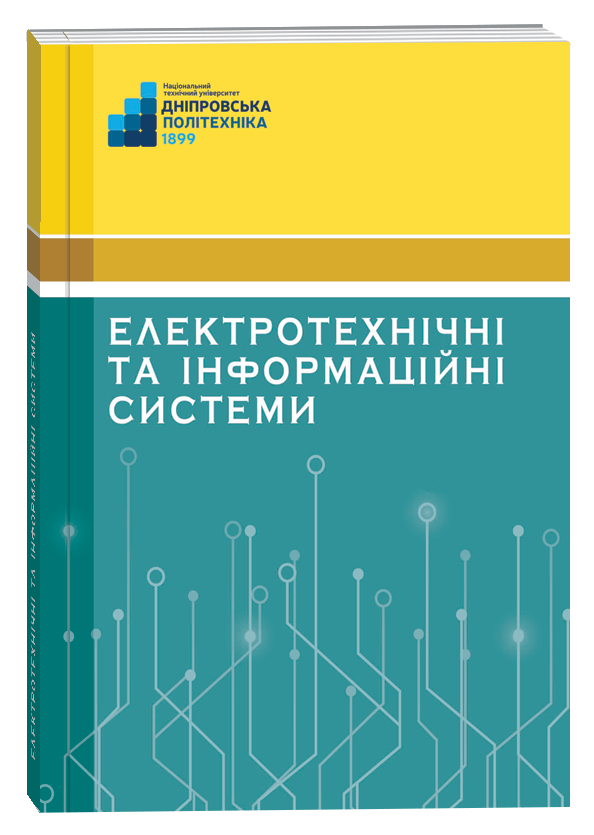INVESTIGATION OF ELECTROMAGNETIC PARAMETERS AND ELECTROMECHANICAL CHARACTERISTICS OF A DC MACHINE BASED ON THE FINITE ELEMENT METHOD
DOI:
https://doi.org/10.32782/EIS/2024-106-9Keywords:
finite element method, DC machine, magnetic induction, magnetic potential vector, electromechanical characteristicsAbstract
The verification calculation of the serial machine of direct current (DCM) MUN-2 with a modified excitation system based on the finite element method (FEM), which allows to investigate the characteristics and electromagnetic parameters of DCM taking into account new design solutions in static, quasi-static and dynamic modes of operation. The finite element model of the DCM can be combined with the chain model of the power supply based on the joint solution of the field and circuit equations, which makes it possible to investigate the characteristics of the engine in various modes when the anchor winding supplies signals of any shape. Based on the obtained results, the verification calculation of the DCM MUN-2 with a modified excitation system based on MSE allows the study of the characteristics and electromagnetic parameters of the DCM, considering new constructive solutions in dynamic modes of operation. The resulting DCM field model can be combined with the power source circuit model based on the joint solution of the field and circuit equations, which makes it possible to study the characteristics of the motor in different modes when feeding the armature winding with signals of any shape. The work established that the motor reaches the maximum rotation speed after 300 ms at a voltage of 120 V on the armature winding. At the same time, there is a surge in the starting current of the armature up to 2.0 A with subsequent stabilization at the level of 0.08 A. The starting torque reaches 1.2 Nm. The MUN-2 reaches the nominal rotation frequency at the nominal load, accompanied by an increase in the armature winding current to 0.7 A. During the operation of the motor, an electromotive force is induced in the armature winding, which, when the motor reaches the nominal rotation speed, stabilizes at the level of 20 V and has a peak character. Maxwell’s system of electromagnetic fields and analytical and mathematical methods for partial differential equations are used to solve the problems. The finite element method is used to solve the differential equations of the magnetic field.
References
Development and Verification of Dynamic Electromagnetic Model of Asynchronous Motor Operating in Terms of Poor-Quality Electric Power. IEEE International Conference on Modern Electrical and Energy Systems (MEES) / Y. Kuznetsova et. al. Kremenchuk, Ukraine, 2019, pp. 350–353, doi: 10.1109/MEES.2019.8896598
Mathematical model of dynamics of homomorphic objects. CEUR Workshop Proceedings / O. Kuzenkov et. al. 2019. 2516, pp. 190–205.
Development of mathematical models of energy conversion processes in an induction motor supplied from an autonomous induction generator with parametric non-symmetry. Eastern-European Journal of Enterprise Technologies / V. Chenchevoi et al. 4 (8-112), pp. 67–82, DOI: 10.15587/1729-4061.2021.239146
Synthesis of a fractional-order Piλdμ-Controller for a closed system of switched reluctance motor control. Eastern-European Journal of Enterprise Technologies / V. Tytiuk et al. 2019. 2 (2-98), pp. 35–42, DOI: 10.15587/1729-4061.2019.160946
Laboratory bench to analyze of automatic control system with a fuzzy controller. Diagnostyka / M. Tryputen et al. 21 (2), pp. 61–68, DOI: 10.29354/diag/122357
Качура А.В. Курсове проектування двигунів постійного струму з дисципліни «Електричні машини» : навч. посіб. Дн-ск : ДДТУ, 2011. 255 с..
Качура А.В. Розробка математичної моделі вентильного реактивного двигуна на основе методи кінних елементів для системи технічного позиціонування. Збірник наукових праць ДДТУ. Технічні наукі. 2015. №. 1. С. 87–93.
Zienkiewicz O.S. Finite elements in the solution of field problems. The Engineer. 1965. № 24. Р. 507–510.
Silvester P. Finite element solution of homogeneous waveguide problems. Alia Frequenza. 1969. № 38. Р. 313–317.
Carpenter, C.J. Finite element network models and their application to eddy current problems. Institution of Electrical Engineers Proceedings. 1975. № 122. Р. 455–462.
Chari M.V.K. Finite elements for electrical and magnetic field problems. John Wiley, Chichester. 1981. 232 Р.
Silvester, P. Efficient techniques for finite element analysis of electric machines. Institute of Electrical and Electronics Engineers Transactions on Power Apparatus and Systems. 1973. PAS. Р. 1274–1281.





